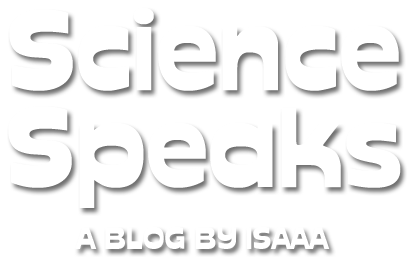Biotechnology Drives Progress in Livestock and Poultry Production
| |
Biotechnology is revolutionizing the livestock industry by providing innovative solutions to enhance animal health, productivity, and sustainability. From disease resistance to enhanced nutrition and reproductive efficiency, biotechnology is helping farmers and producers meet the growing global demand for livestock and poultry products. To showcase biotech applications in animals, the Department of Agriculture - Livestock Biotechnology Center (DA-LBC) partnered with ISAAA Inc. in holding the 8th International Livestock Biotechnology Symposium with the theme, Demand-driven BIOTECH Innovations Towards a Resilient and Sustainable Animal Industry. The webinar brought together a total of 772 leading experts, researchers, and stakeholders from around the world.
What is an emerging biotech solution for livestock production?
Dr. Alison Van Eenennaam, Cooperative Extension Specialist at the University of California Davis (UC Davis), said that genome editing is an emerging biotech solution for livestock production. Genome editing has been a powerful tool to increase production, reduce disease susceptibility, and improve food quality or nutrition, among others.
The technology has been used to produce tuberculosis-resistant cattle, SLICK cattle for warmer climates, the first gene-edited calf with reduced susceptibility to Bovine Viral Diarrhea (BVD), and gene-edited polled calves. Genome editing will also obtain coat color variants better suited to warmer climates for dairy cattle, remove major milk allergen beta-lactoglobulin protein from cattle, and produce Porcine Reproduction and Respiratory Syndrome (PRRS) virus-resistant pigs. In terms of commercialization, Dr. Van Eenennaam shared that gene-edited red sea bream and pufferfish are two products of gene editing that are available in Japan.
In many countries, Dr. Van Eenennaam said that simple edits (e.g., without the use of any DNA template) are not treated any differently than conventional breeding. This is because there is no foreign DNA involved, therefore, considering it a non-GMO. Dr. Van Eenennaam said, “The fate of this technology in livestock breeding programs is very much dependent on developing a risk-based regulatory framework that is shared amongst countries that trade animal products.”
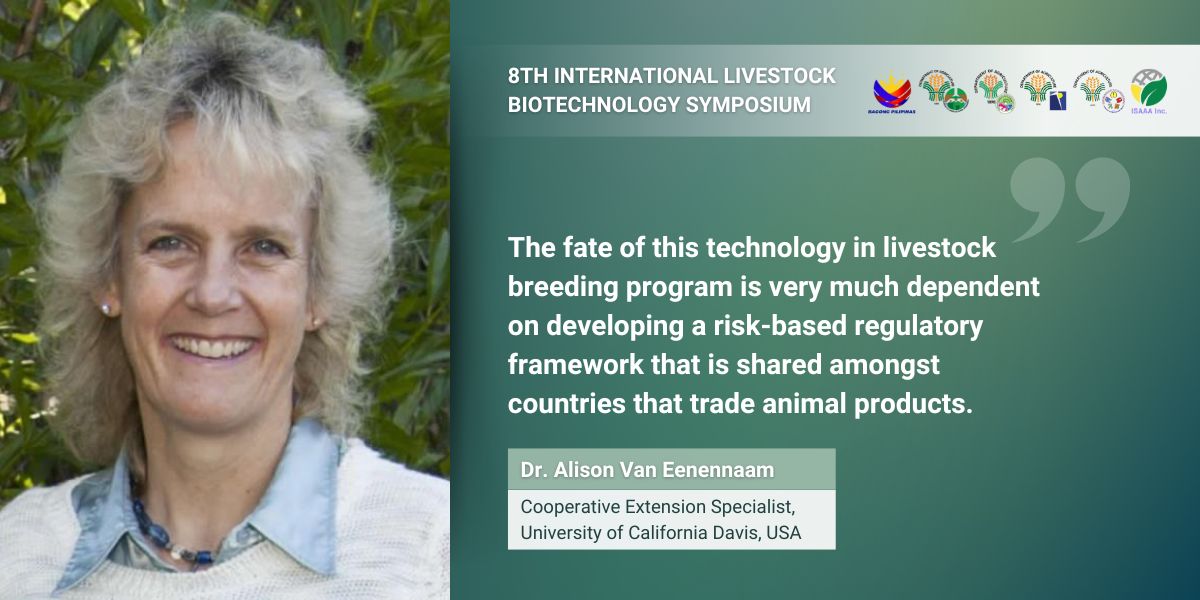
How is animal biotechnology being applied in poultry?
According to Our World in Data, the poultry industry shows efficient use of land and feed to generate versatile high-quality food. In agriculture, scientists genetically engineer birds for improved poultry production, disease resilience, sex sorting, and safer food products.
Dr. Mark Tizard, Senior Scientist in genome engineering at the Commonwealth Scientific and Industrial Research Organisation (CSIRO) in Australia, said that gene editing in birds is very different compared to mammals. In mammals, gene editing is performed on freshly fertilized eggs (in vitro), while gene editing in birds requires alternative approaches because the ovum is intimately associated with the yolk and is fertilized at the top of the reproductive tract. Dr. Tizard said that sex sorting benefits the entire supply chain. Removing the marker eradicates male chick culling, leading to improved ethics/welfare, sustainability, and reduced carbon footprint.
According to the Office of the Gene Technology Regulator (OGTR), organisms derived from GMOs but with no traits from gene technology are non-GMO and will not be regulated as GM food. Consultations and discussions were conducted globally and Dr. Tizard’s team received positive feedback from regulators in Argentina, Brazil, Canada, Japan, and the US. Dr. Tizard emphasized that OGTR and Food Standards Australia New Zealand (FSANZ) will still oversee this process once produced.
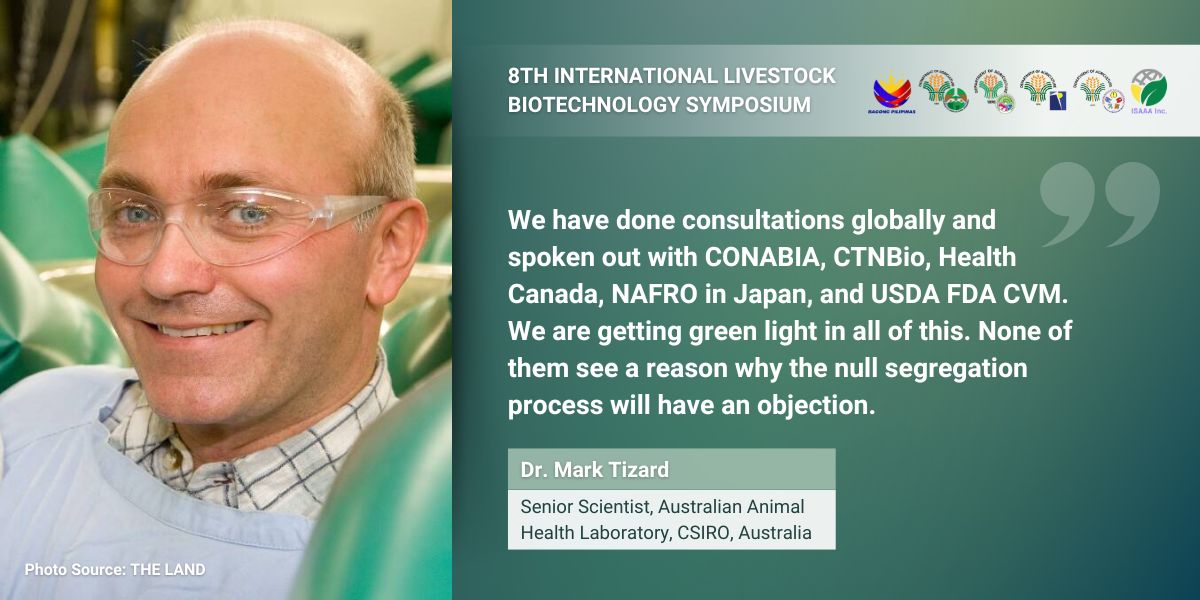
How do regulations affect the applications of animal biotechnology?
Dr. Van Eenennaam said that the regulations have multiple roles: to protect the health and safety of humans, animals, and the environment, to instill trust in the food supply, and to encourage the development of new ideas and innovations. Different countries have different regulatory approaches, existing regulatory structures, and legal enabling authorities.
The regulations and how they are implemented shape what products are developed and who can afford to use these new technologies. Dr. Van Eenennaam thinks that countries need to implement change to ensure that these developed solutions and innovations are available. A risk-benefit analysis is necessary because what is usually not considered in the regulations is the risk of not approving. Scientists continue to do research, but people can’t use them because of the risks. Dr. Van Eenennaam said that everything has risks, but not doing something has risks too. Every potential risk has been considered, except for the risk of avoiding all risks. A product-based, science-based, and risk-proportionate regulation is needed for genome editing.
According to Dr. Van Eenennaam, regulations should enable safe products to reach the market and encourage the development of new ideas and innovations. These regulations should provide farmers with the choice of the best selection of tools to better meet the challenges of the future more sustainably.
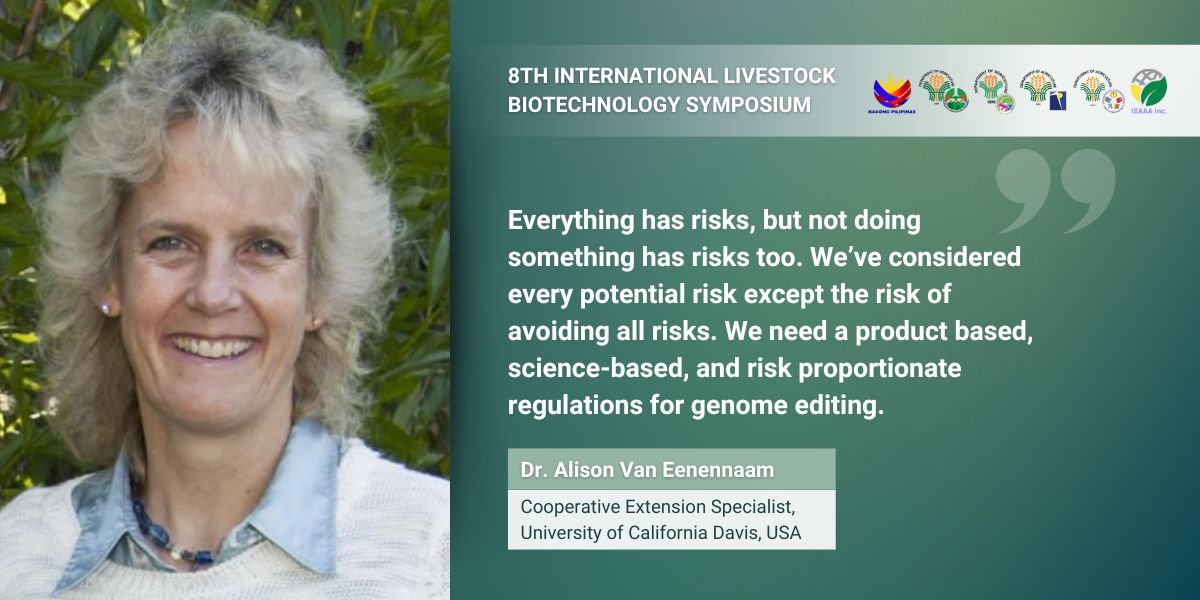
What is the status of animal biotechnology in the Philippines?
Dr. Julianne A. Vilela, University Researcher II at the Philippine Genome Center (PGC) said that animal biotechnology in the Philippines is still in its early stages, but it is crucial for the livestock industry, as it can address challenges such as disease outbreaks, slow productivity, and climate change. Research efforts in animal biotechnology in the country are being conducted by government and academic institutions such as the University of the Philippines Los Banos (UPLB) Institute of Animal Science. The research includes genome sequencing of native breeds (chicken), genetic variation analysis (using SNP chips for Darag chicken), and the development of diagnostic tools (like the I-detect kit for meat product authentication).
The country's current regulation of genetically modified animals, including gene-edited animals and vaccines falls under the oversight of multiple agencies, including the National Committee on Biosafety of the Philippines (NCBP), Bureau of Animal Industry, and the Food and Drug Administration (FDA) that oversee genetically modified organisms (GMOs). A draft joint circular addresses genetically modified animals, aiming to provide a clear regulatory pathway for gene-edited animals and CRISPR-based applications. It outlines requirements for research, trials, and international trade. Gene-edited animals without novel genetic combinations are currently exempt from GMO regulation. An important consideration would be how gene-edited animals and CRISPR-derived vaccines will be classified and regulated. The improvements needed, according to Dr. Vilela, are clearer guidelines for CRISPR in livestock and vaccines; faster and risk-based approval pathways; and public awareness and engagement to build trust in biotechnology solutions.
Misconceptions about animal biotechnology are still present as the public often equates gene editing with GMOs, and this leads to resistance. Concerns about food safety and unintended effects persist, and ethical questions about modifying animal genomes are raised. Dr. Vilela said that these concerns could be addressed through transparent communication, responsible research, and clear regulations.
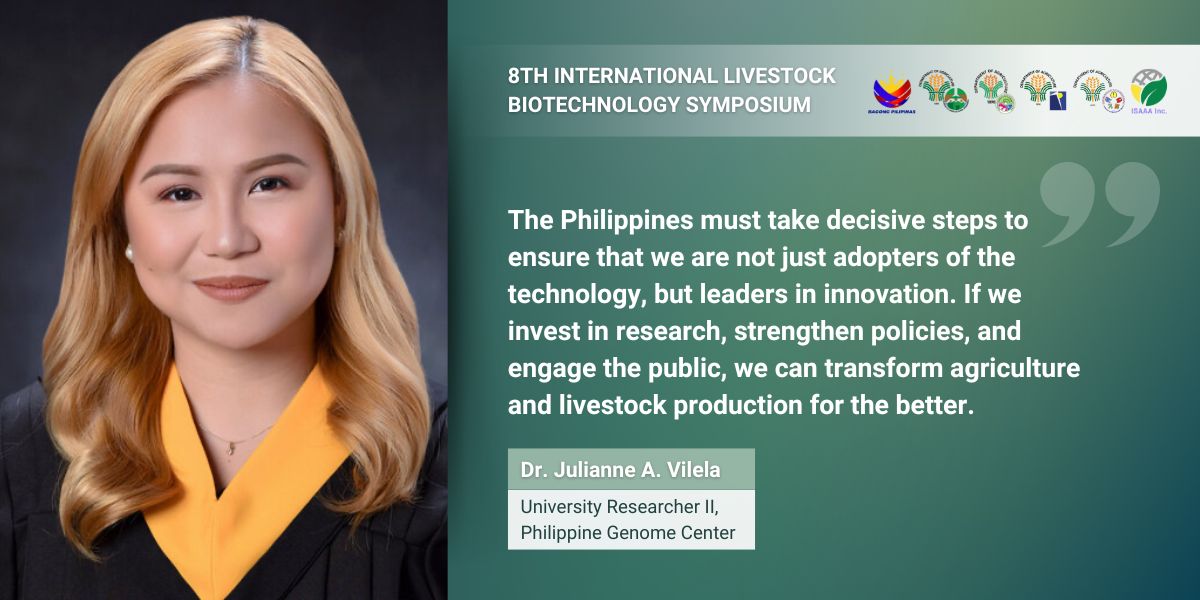
Visit the ISAAA Webinars page or the Facebook page of Livestock Biotech to watch the recorded webinar. Subscribe to the Biotech Updates and follow isaaa.org on Facebook, X, and Instagram.
| Newer Post | Archive | Older Post |
Science Speaks is ISAAA Inc.'s official blog. Weekly blog articles, authored by ISAAA writers, partners, and invited contributors, aim to help share, disseminate, and promote scientific knowledge and its vital role in achieving global agricultural sustainability and development. Your support to Science Speaks will help us achieve this goal. You can help us by donating as little as $10.

